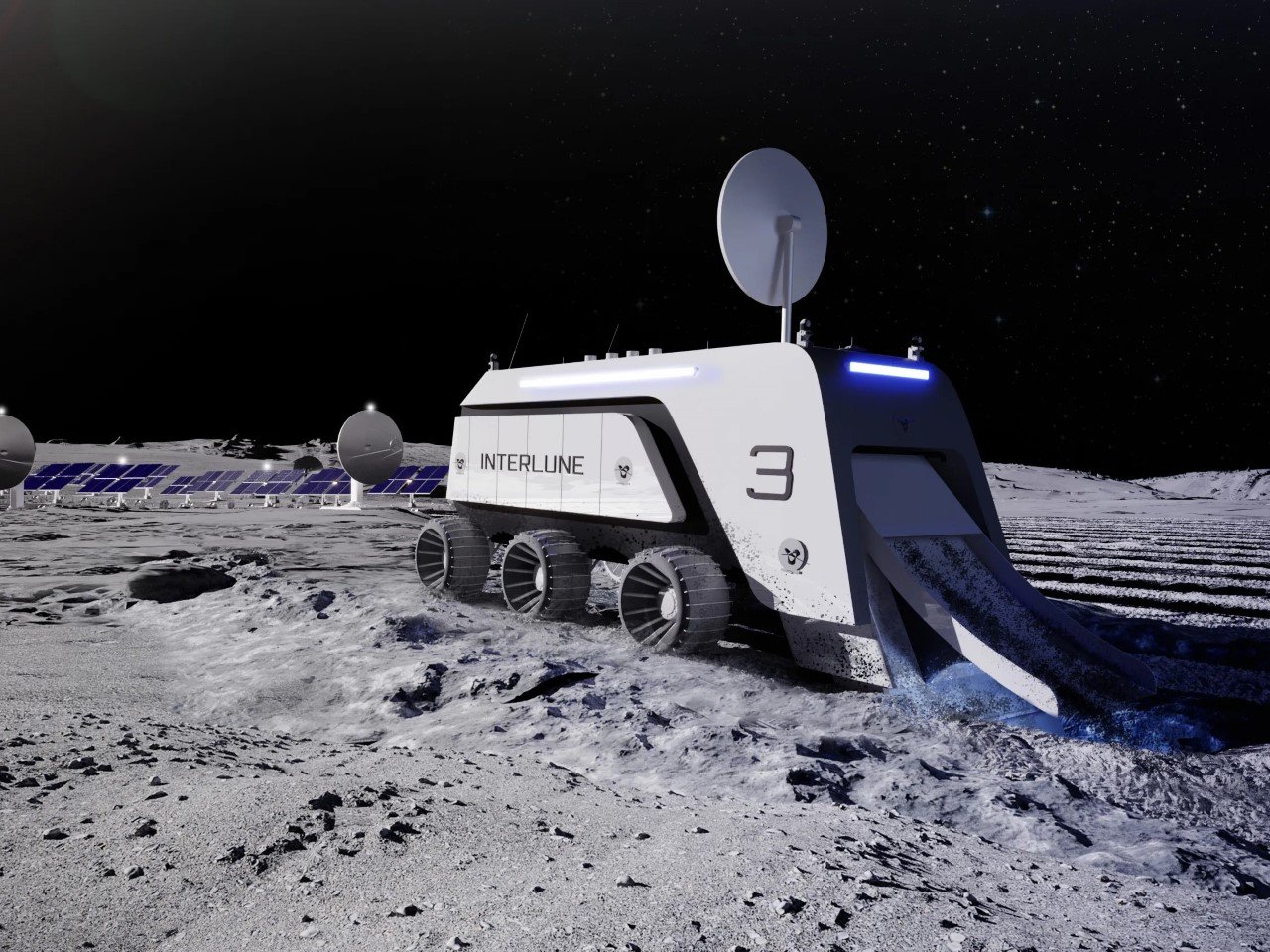Nobody expected lunar mining to begin with a robot that looks like a cross between a road trencher and a sandbox toy, but that’s what Interlune and Vermeer have built. Designed to dig up moon dust and extract helium-3, this machine isn’t a sketch on a napkin. It’s a functional prototype being tested on Earth right now, aiming to harvest a gas that could change both energy and computing as we know them.
Helium-3 is rare on Earth but relatively abundant on the moon. That’s thanks to billions of years of solar wind bombarding the lunar surface, which lacks a magnetic field to deflect particles. Interlune’s machine drills down about three meters into the regolith, the loose soil covering the moon, where concentrations of helium-3 are likely highest. It can process up to 100 metric tons of regolith per hour and extract helium-3 using a chemical separation system engineered for lunar conditions.
Designer: Interlune
The payoff is steep. Each kilogram of helium-3 is expected to fetch $20 million. That’s partly because it could fuel advanced nuclear fusion reactors without producing radioactive waste. It also plays a key role in cooling quantum computers to ultra-low temperatures, using dilution refrigeration that only works with helium-3. As the quantum industry grows, the demand for this gas will only rise.
Interlune has already secured two major clients. One is the U.S. Department of Energy. The other is Maybell Quantum, a company that sees helium-3 as critical to scaling quantum computing infrastructure. Maybell’s CEO has said every quantum system they deploy needs to get extremely cold, and helium-3 is the only way to do that reliably.
The company’s plan rolls out in three stages. First comes Crescent Moon, a mission launching later this year to scan the lunar south pole for helium-3-rich regions using hyperspectral imaging. Then Prospect Moon will land a prototype on-site to confirm those deposits and test extraction tech. The final step, Harvest Moon, aims to complete full-scale operations and return the extracted gas to Earth by 2029.
Interlune won’t be shipping rocks back home. Only the refined helium-3 will make the trip, which keeps launch costs in check and makes the business model viable. The concept is elegant in its simplicity, grounded in heavy machinery and actual contracts rather than theoretical promise.
The post Lunar Harvester plans to tap into the Moon’s Helium-3 Reserves to accelerate Quantum Computing first appeared on Yanko Design.

